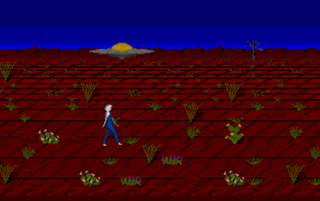Difference between revisions of "Woman Warrior and the Outer Limits"
m (Protected "Woman Warrior and the Outer Limits" ([edit=autoconfirmed] (indefinite) [move=autoconfirmed] (indefinite))) |
|
(No difference)
| |
Revision as of 17:33, 20 August 2010
As the title suggests, this game was inspired by an episode of our favorite 1960s anthology series.
Both this game and its sequel incorporate relatively enormous, multi-block monsters. On its own this is an unusual technique, as Game-Maker only really supports single-block monsters. More advanced designers will design large static monsters out of side-by-side monster blocks. One or two of those blocks will be “hotspots” that, when destroyed, will spawn swirling explosion monsters that consume all the surrounding blocks. The monsters generally are static, as once they get moving there is no way to guarantee that the blocks will all stay together. Yet somehow Chase gets it right. Here, enormous flying saucers move along complex synchronize paths, occasionally birthing a laser bolt to attack the character below.
Another curious trait of both Woman Warrior games is their extensive use of cutscenes. Characters and monsters animate along intricately timed paths and animations, accompanied by digitized sound, voice, and music cues to help tell the story. I struggle to think of another example of in-engine cutscenes in a Game-Maker game. I’m sure one or two simple cases are skipping my mind — the odd character or space ship traveling by its own momentum from point A to point B — but nothing on a scale like this.
Finally, Chase’s games are distinguished by a sort of rudimentary puzzle-solving. In The Outer Limits, this involves luring benevolent ant monsters to the exit, collecting arrows from the desert sands, slaying the ants with those arrows, and hoping the resulting explosion will take out a few of the mutant weeds that block your way. It won’t take more than a couple of tries, and the game only has the one level. Still, there’s a lot of stuff going on here.
